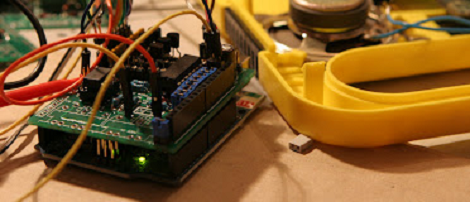
Back in 1991, a young [Backwoods Engineer] and his new wife went to a Valentines day get together. One of the conditions of the shindig was having the guys make – not buy – a Valentines day card. Go big or go home, he though, and after a few days he had a talking Valentines day card that would become one of his wife’s most treasured possessions.
The early 90s were a different time; in case you haven’t yet been made to feel very old yet today, 1991 is closer to 1970 than 2013 is to 1991. Likewise, the circuitry inside this heartfelt talking token of appreciation bears more resemblance to something from a 1970s electronics magazine than an Arduino project of today.
The project is powered by an old Intel MCS-48 microcontroller attached to one of the old speech synthesis chips Radio Shack used to sell. These are, in turn, connected to a programmable logic chip and a masked ROM that translates English words into phonemes for the speech synthesizer.
The entire device is constructed on a hacked up piece of perf board and a few wire wrap sockets; sturdy construction, even if the battery compartment has been replaced a few times.
As for what the talking valentine says? “”OK! Hello, I am a Talking Valentine Card. “Love Is A Many-Splendored Thing” and in this case also needs batteries!” You can check that out after the break.












